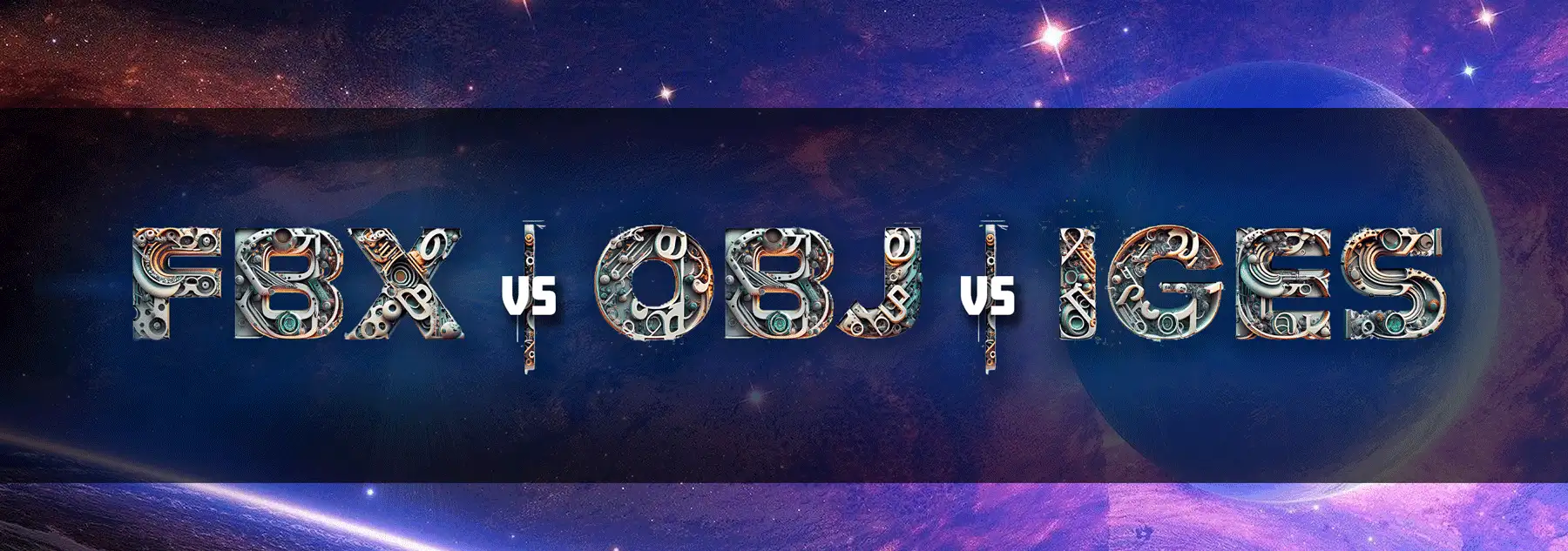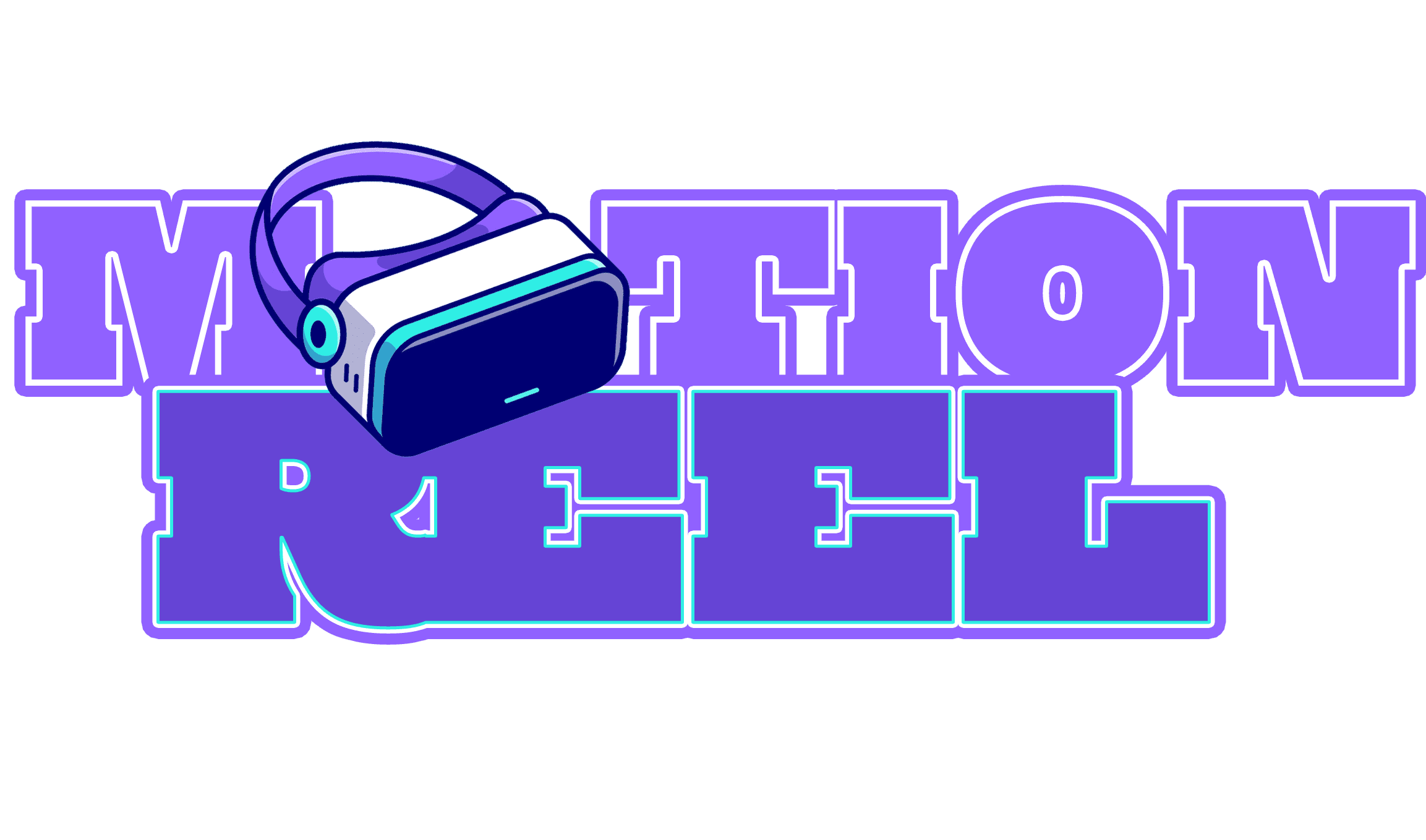If you’re a designer, artist, or have a passion for 3D, you’ve likely encountered various 3D model file formats, including OBJ and FBX. These formats hold crucial roles in the 3D design world. Now, let’s dig into the distinctions between OBJ vs FBX and how they connect with Gravity Sketch 6, a well-known 3D design software.

OBJ vs FBX vs IGES |
OBJ (Wavefront Object)
Let’s start by looking at OBJ. Developed by Wavefront Technologies, OBJ stands as one of the oldest and most widely supported 3D file formats. It’s endured the test of time, remaining prevalent. OBJ files are straightforward text-based formats storing 3D geometry data – vertices, faces, and texture coordinates – but lack animation support.
Advantages of OBJ:
- Simplicity: OBJ’s text-based nature makes it human-readable and a preferred choice for basic 3D models.
- Wide Compatibility: Virtually all 3D modeling and rendering software can import and export OBJ files, promoting versatility for sharing models across diverse applications.
- Open Standard: OBJ’s openness ensures long-term accessibility and support, free from software or company constraints.
Limitations of OBJ:
- No Animation Support: OBJ’s deficiency in supporting animations makes it less suitable for intricate animated projects.
- Larger File Sizes: The text-based structure of OBJ files tends to result in larger file sizes compared to binary formats like FBX, which can pose issues for sizable, detailed models.
OBJ vs FBX vs IGES |
FBX (Filmbox)
Next, we delve into FBX. Developed by Autodesk’s Kaydara, FBX is a proprietary format initially designed for Filmbox software, now known as MotionBuilder. It has become an industry-standard, widely used in 3D applications, including Autodesk’s popular Maya and 3ds Max.
Advantages of FBX:
- Animation Support: FBX excels in supporting animations – keyframes, skeletal animations, and intricate motion data – making it ideal for character animations and scenes.
- Compact File Sizes: FBX’s binary nature ensures more compact files that can store large and complex 3D models efficiently.
- Compatibility: Autodesk offers a free FBX Converter tool, enabling easy conversion to and from other formats, ensuring broad compatibility.
Limitations of FBX:
- Proprietary Nature: Despite its industry standard status, FBX remains proprietary to Autodesk, potentially raising concerns about future updates relying solely on one company.
- Texturing and Material Issues: Sometimes, when transferring FBX files between software, texture and material translation issues can arise.
OBJ vs FBX vs IGES |
IGES (Initial Graphics Exchange Specification)
Lastly, we examine IGES. As a neutral format developed for sharing 2D and 3D data among CAD systems, IGES aims to standardize 3D file exchange.
Advantages of IGES:
- Compatibility: IGES files facilitate collaboration across various CAD software, accommodating engineers, architects, and designers working with different CAD tools.
- Precise Geometry: IGES maintains high-precision geometric data, ensuring accuracy when transferring intricate models between systems.
- Open Standard: Like OBJ, IGES’s open standard promotes accessibility and widespread adoption.
Limitations of IGES:
- No Animation or Material Support: IGES, like OBJ, focuses on geometry, lacking support for animations, textures, materials, or complex multimedia data.
- File Size and Complexity: Depending on model complexity, IGES files can become large, leading to storage and transfer challenges.
OBJ vs FBX vs IGES | Which Format Should You Use in Gravity Sketch 6?
With insights into OBJ vs FBX vs IGES, the choice for Gravity Sketch 6 depends on your specific needs and model purposes.
- For Simplicity: Opt for OBJ when transferring basic 3D models across software or when file size isn’t a major concern.
- For Animation and Complexity: FBX shines for animations, detailed textures/materials, and dynamic scenes.
- For CAD Interoperability: IGES is ideal for collaborating with CAD users, maintaining geometric precision.
Conclusion
Choosing the right 3D model file format significantly affects your workflow and collaboration. While OBJ, FBX, and IGES each have strengths and weaknesses, they cater to different aspects of the 3D design and modeling world.
In Gravity Sketch 6, leverage these formats based on project requirements. Understanding OBJ, FBX, and IGES differences empowers you to make informed decisions and harness your 3D creations’ potential.

